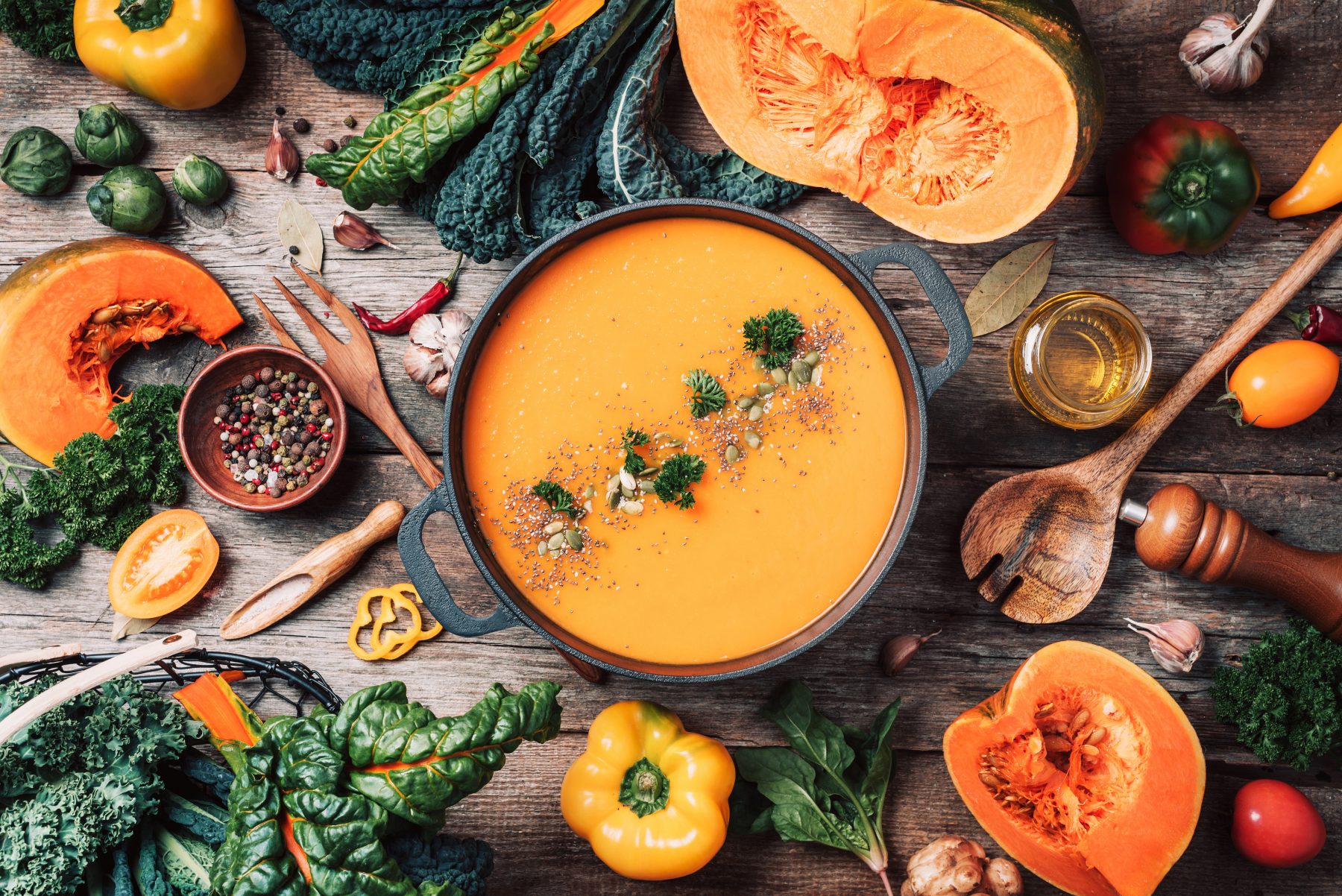
Fall Vegetables for Health
Fall has definitely arrived! This time of year not only brings cooler temperatures, weekends of watching football, and the nearing of the holidays, but also a myriad of brightly colored, delicious, and nutrient-dense seasonal fare. Take advantage of not only their ability to add amazing flavors and a festive feel to your meals but also of their anti-inflammatory benefits and support to your cardiovascular and immune systems.
Pumpkin
This gourd-like squash is best known as the main ingredient in many desserts and other sweets like pies, breads, muffins and holiday-themed coffee shop lattes. Healthier and more recommended uses would include it in soups and veggie dishes, as well as adding some organic canned pumpkin to your morning gluten-free oats or to plain goat or sheep’s milk yogurt. Along with its great flavor, you’ll also get a nice dosage of vitamin C, potassium, magnesium, beta-carotene, and fiber.
Sweet Potato
We’re used to seeing the traditional bright, orange-colored flesh of our sweet potatoes, which will provide beta-carotene, along with potassium, manganese, fiber, and vitamins A, C, and B6, but the inside of this root vegetable can actually range from creamy-white and yellow, to deep purple in color. Those that are purple-hued will boast anthocyanin pigments (also found in blueberries), and with them, anti-inflammatory and antioxidant benefits. Simply bake or mash sweet potato with a little sea salt and cinnamon as a festive and spicy-sweet side dish, or for a more savory side, cube and roast them with diced onions, garlic, paprika, sea salt, and black pepper.
Winter Squash
You’ll see many different types of squash at your grocery store around this time of year, with some of the more popular and versatile being acorn, butternut, and spaghetti squash. Their mild, sweet, nutty flavors and vast nutrient profile, including vitamins A and C, potassium, manganese, fiber, omega-3 fatty acids, and several B vitamins make them hard to pass up. Are you trying to stay lower carb, but missing your pasta? Try spaghetti squash! Once it’s halved and cooked, it easily pulls apart with a fork into stringy, spaghetti-like strands that you can top with homemade tomato sauce, or with organic butter and fresh herbs. Butternut is the smooth, sweet one of the group, along with being easy to peel and quick to sauté, roast, or mash.
Apples
Boasting fiber, vitamin C, B complex vitamins, and antioxidant flavonoids, such as quercetin, these low glycemic index snacks are great washed, sliced, and enjoyed with organic almond or sunflower seed butter. Whether you like to crunch on a tart Granny Smith, a sweet Golden Delicious, or middle ground Fuji, try to buy organic, as apples are one of the more highly pesticides and chemical sprayed types of produce. Beyond a simple snack, diced apples also make great additions to salads, braised red cabbage, and quinoa dishes.
Cinnamon
This fragrant spice, shown to have anti-microbial and anti-inflammatory properties, is also a widely touted aid in blood sugar regulation. Give your everyday oatmeal or plain yogurt (goat or sheep’s milk) a little seasonal pizazz with a sprinkle of ground cinnamon, or add it to your autumn favorites like butternut squash soup.
Enjoy the Fall Season!
We hope you have a wonderful fall season and take advantage of the nutritious foods that this time of year has to offer. If you’re interested in getting on a healthy diet and exercise regimen year-round, we encourage you to contact our clinic today!
